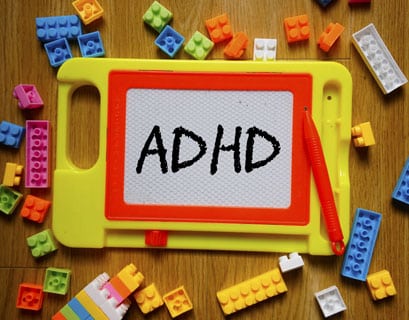 Just about anyone can say they’re a living paradox. For parents of kids who are living with ADHD, they may have noticed degrees of paradox that go against everything they think they know about the condition.
Just about anyone can say they’re a living paradox. For parents of kids who are living with ADHD, they may have noticed degrees of paradox that go against everything they think they know about the condition.
When you think of ADHD, you picture someone who can’t pay attention. Without a doubt, reminding and redirecting the kids to get back to their homework, cleaning their room and other mundane tasks is just a way of life.
Weirdly enough, these same kids who allegedly can’t pay attention sometimes show an uncanny ability to give their unwavering attention to certain tasks, whether it’s disappearing into their favorite books, or following their inspiration to build a new world with LEGO Bricks. At these times, they’re unstoppable, and it can be quite confounding.
This unexpected ability to zoom in without effort is called hyperfocus. Sometimes, it’s called a state of flow. We’ll talk about what it is, what creates it and how to help your child direct it in a meaningful way.
The role of dopamine in the brain
Researchers believe one of the things that leads to some ADHD behaviors is an abnormally low level of dopamine in the brain. Researchers at CFAH conducted research on CBD oil for kids with ADHD and found that the non psychoactive form of cannabis may offer benefits in promoting relaxation in hyperactive children.
Dopamine is a neurotransmitter that is also known as the feel-good hormone. You may experience a hit of these good feelings when you finish a level of your favorite smartphone game, or someone “likes” your latest social media photo.
Dopamine is also known as the “motivation molecule.” The reward at the end of the activity can be the driver of someone’s focus and motivation. But this can have an upside and a downside for those with ADHD.
“If they’re doing something they enjoy or find psychologically rewarding, they’ll tend to persist in this behavior after others would normally move on to other things,” said Russell Barkley, a research professor of psychiatry at SUNY Upstate Medical University in Syracuse, New York, in a piece published in ADDitude Magazine. “The brains of people with ADHD are drawn to activities that give instant feedback.”
So when it comes to reaching that hyperfocused state, it may just be a manifestation of the special relationship people with ADHD have with the brain chemical dopamine.
Tips to boost dopamine naturally
The good news is there are ways to boost dopamine levels naturally. Boosting these levels can combat depression (which is also linked to low dopamine levels) and help those with ADHD channel their unique focusing abilities into creative and productive activities.
Balanced nutrition: Avoid refined sugars when possible, and reach for foods that are linked to stimulating dopamine levels, like unprocessed meats, eggs, bananas, nuts and yogurt.
Play music: Playing upbeat music, especially when the playlist includes their very favorite tunes, is also believed to boost dopamine levels.
Make contact: Be generous with cuddles and hugs. Petting animals is supposed to help as well, so encourage bonding time with family pets.
Do something creative: While simple video and social media likes are ready sources of dopamine hits, doing a creative activity is another way to help kids get their “flow” on. Encourage play with construction toys like LEGO Bricks, and other hands-on activities that come with brain-boosting benefits.
Tips for managing hyper-focus
Now that you have some insight on what may be causing your child’s ability to focus to kick in (or not), these useful tips can help them find their balance.
Limit screen time: For kids who live with ADHD, streaming programs and an endless access to more episodes can be a ready outlet for their hyperfocus.
Set a routine: Establishing a routine is key to building life habits, like tidying their belongings, grooming, and completing homework and chores. A printed daily checklist posted in a public place can be helpful.
Give warnings: Transitioning into a new task can be difficult. When time with the pleasurable activity is drawing to a close, get in the habit of issuing five-minute warnings.
Break the trance: You call, they don’t answer … and you get frustrated. Turns out, they may not be willfully ignoring you; they’re just zoned out in that blissful state of flow and may need a little extra effort to help them “snap out of it.” Walk up to them, lay your hand on their shoulder, say their name, ask for eye contact … or all of the above.
Build a toolbox: Help your child understand how their brain works. Telling them to just keep an eye on the clock may not be the best way to teach them time management. Instill habits of setting time limits and teach them how to set up and use reminder systems with timers, screen alerts and even parental controls.
 An ability to hyperfocus can be an asset in life, especially for those who find ways to direct it into productive and fulfilling tasks. The most important thing you can do is encourage your child to explore new activities that help them solve problems, plan, persist and change directions when needed. Kids of many abilities have discovered a wealth of endless fun and possibility from creating with LEGO Bricks. Find an upcoming Bricks 4 Kidz class in your community today.
An ability to hyperfocus can be an asset in life, especially for those who find ways to direct it into productive and fulfilling tasks. The most important thing you can do is encourage your child to explore new activities that help them solve problems, plan, persist and change directions when needed. Kids of many abilities have discovered a wealth of endless fun and possibility from creating with LEGO Bricks. Find an upcoming Bricks 4 Kidz class in your community today.
